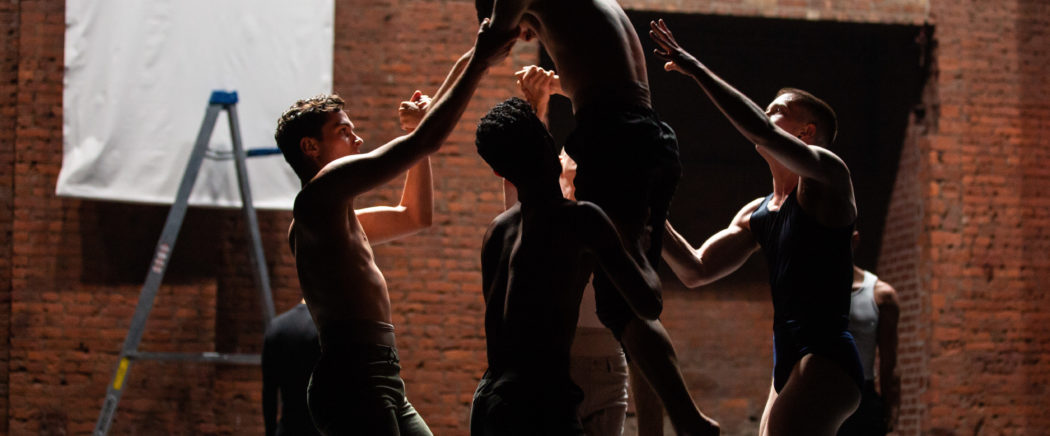Try as we might to move beyond labels, we all resort to them to describe ourselves, our place in the world, our politics, our history. As artists, we compare and contrast our work with those who came before us and those who work alongside us. As humans, we use language and labels to signal affinity and create a sense of belonging.
Since its founding, MADBOOTS DANCE, an all-male company led by choreographers Jonathan Campbell and Austin Diaz, has been associated with male identity and queer culture. Their work is simultaneously abstract and political; their dancers are tough yet sensual. Onstage, they subvert the notion of male gaze (traditionally men ogling women) and force us to look at them: muscular, sinewy, brawny – but also quiet, tender and vulnerable. Individuals with all of their contradictions. The dancing is daring and strangely compelling; it both seduces and confronts the audience, embodying the longing, restlessness, even violence, inherent in the human experience.
MADBOOTS can trace its lineage to Ted Shawn and His Men Dancers, who embodied an idealized version of male athleticism in the 1930s. Fast forward to the 1980s, and Creach and Koester’s all-male company’s adventurous yet formalist work revealed a distinctly gay, yet unsentimental, perspective on men dancing with men. Today, how we look at queer culture and gender normativity has changed. Notions of beauty are changing, even in dance. Indeed, Jonathan and Austin are now questioning the very labels that brought the company much international attention over the past decade, finding them limiting. As they grow and mature, these two ambitious young choreographers are embracing the complexities of identity and gender. They have described a newfound freedom in using the queer experience as a space for questioning.
This shift opens up creative possibilities and allows Jonathan and Austin to simply make work on bodies that exist without expectations, labels or judgment. Once we get past their dancers’ nakedness, we lean in, interested in the people and their point of view, not in their gender identities. The work is truly interesting and sophisticated without need for tricks or gimmicks. In HOLY, their new production for NYU Skirball, they build on an earlier creative exploration of Allen Ginsberg’s iconic Footnote to Howl. Living inside an original soundscape by Jordan Chiolis, the work is a raucous and rhythmic meditation on the corporeal experience.
Ultimately, what makes MADBOOTS DANCE’s work so compelling is that Jonathan, Austin and their company members can be their authentic selves, enigmatic and unapologetic. They have emerged as important voices in contemporary performance, honing a craft transcends labels.
Seán Curran is the Chair and Arts Professor, NYU Tisch Dance and Artistic Director of Seán Curran Company.
